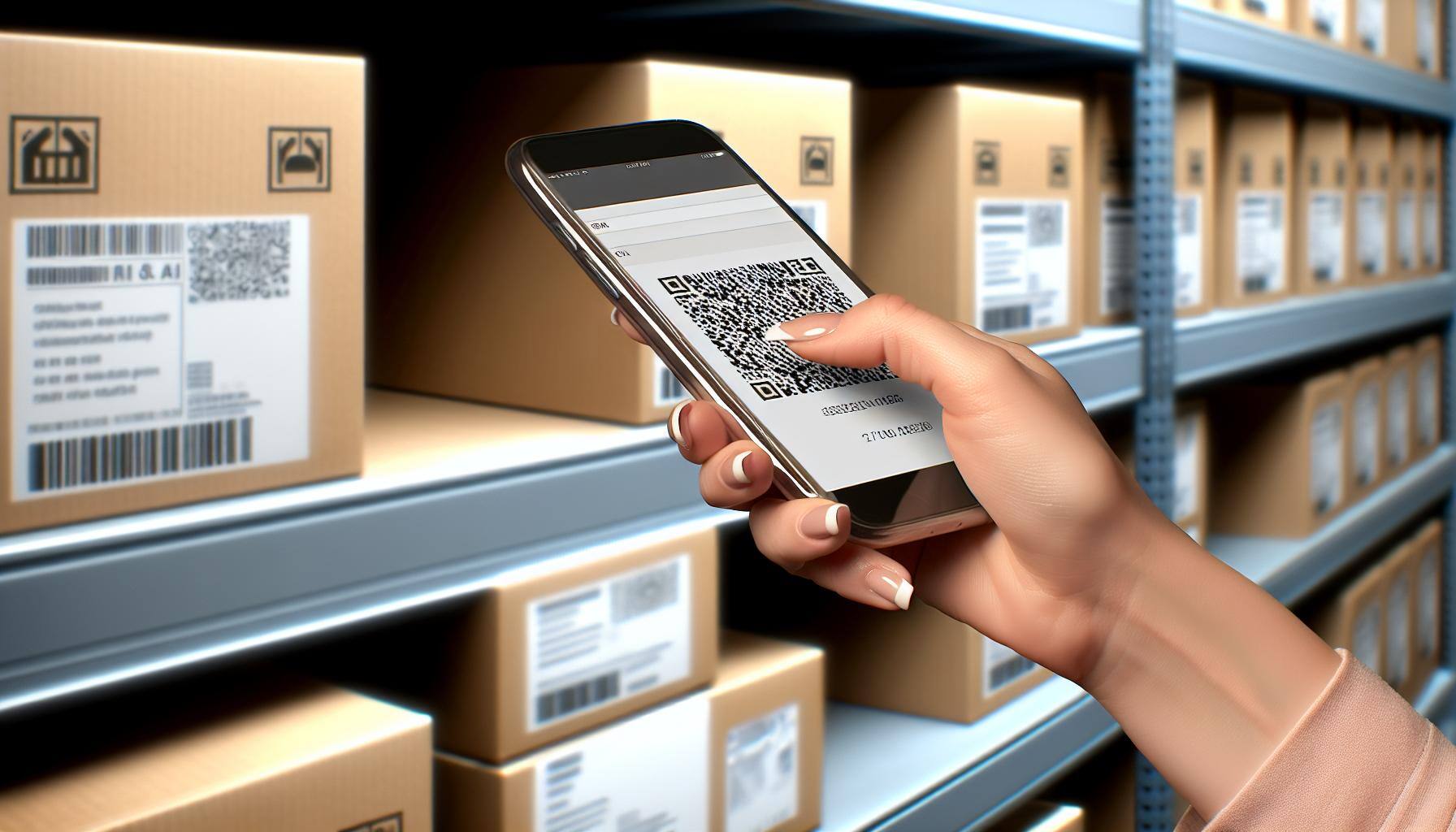
Listen to this blog
Using QR Codes for Inventory Management
In today’s fast-paced business environment, maintaining an accurate and efficient inventory system is crucial for any organization. More organizations are doing inventory management with QR codes, which have emerged as an efficient, data-rich tool for inventory management, offering a modern solution to the challenges posed by traditional barcoding systems. This article explores QR codes for inventory management and how BL.INK can help streamline this process.
The Evolution of QR Codes
QR codes were first developed in 1994 by Denso Wave, a subsidiary of the Toyota Group, for inventory management. They quickly gained traction due to their ability to store vast amounts of data and their ease of use. Over the years, QR codes have evolved from a simple inventory tracking tool to a versatile technology used across various industries for multiple applications, including marketing and public health tracking during the 2020 pandemic. Today, using QR codes for inventory management is a standard practice among businesses looking to enhance their operational efficiency.
Advantages of Inventory Management with QR Codes
Ease of Use
One of the primary advantages of inventory management with QR codes is their simplicity. Anyone anywhere in the world can scan a QR code with a smartphone, making it accessible for most employees without needing specialized equipment. This ease of use translates to faster inventory tracking and reduced training time for staff.
Enhanced Data Storage
Unlike traditional barcodes that store minimal data, QR codes can hold a wealth of information, including product details, customer data, and links to online systems. This capability makes using QR codes for inventory management much more comprehensive and efficient.
Security
QR codes are more secure than traditional barcodes. They can be encoded with specific inventory details, reducing the risk of data loss or tampering. This added layer of security is vital for businesses that handle sensitive inventory data.
Size and Versatility
QR codes are compact and can fit on any inventory label, regardless of the item's size. This versatility allows businesses to implement inventory management with QR codes across a wide range of products and materials.
Implementing QR Codes in Inventory Management
Getting Started
To start using QR codes for inventory management, businesses need a smartphone with a QR code reader, which is typically included in the phone’s camera app. Alternatively, there are numerous QR reader apps available for download.
Comparing QR Codes and Barcodes
While barcoding systems have been used since the 1970s, QR codes offer several advantages over traditional barcodes. Barcodes store basic data such as item name and quantity, whereas QR codes can store extensive information, including images and links to external systems. This functionality makes inventory management with QR codes more flexible and informative.
Potential Drawbacks
Despite their many benefits, QR codes do have some limitations. They require a smartphone to scan and an internet connection to access the encoded data. This requirement can be a drawback in areas with poor connectivity. Additionally, QR codes may not be compatible with all types of inventory scanners, so businesses must ensure their existing equipment can read QR codes.
Case Study: IT Manager/Auditor at a Large Company
Consider the example of an IT manager at a large corporation responsible for tracking computers and peripherals assigned to employees. Using QR codes, each computer and peripheral is tagged with a unique code containing detailed information, including the device’s physical location, operating system, user manuals, and maintenance alerts. When a computer reaches five years old, for example, the system can automatically trigger an alert, notifying the manager that it is time for a replacement. This process ensures that the IT department maintains an up-to-date and efficient inventory, reducing downtime and improving overall productivity.
How BL.INK Enhances Inventory Management with QR Codes
BL.INK simplifies the process of using QR codes for inventory management. By integrating specific data into links that align with QR codes, BL.INK allows businesses to create dynamic mobile microsites for each product. These microsites provide detailed information about each item, from manufacturing and assembly to shipping and maintenance, among other data points, making inventory management with QR codes more effective.
Dynamic QR Codes
One of the standout features of BL.INK is its ability to create dynamic QR codes. These codes can store and display different information based on who scans them. For instance, a logistics scan might show transport details, while an IT team scan could reveal the latest operating system information. This flexibility makes inventory management with QR codes more versatile and powerful.
Real-Time Tracking
BL.INK also offers real-time tracking of QR code scans, providing businesses with up-to-date information about their inventory status. This capability ensures that all inventory data is accurate and current, facilitating better decision-making and resource allocation.
Easy Integration
Whether a business uses a standard spreadsheet or a purpose-built inventory management tool, BL.INK can integrate seamlessly with existing systems. This integration allows companies to generate custom QR codes for each product, containing comprehensive information and links to additional resources like PDFs and videos.
Benefits of Using QR Codes for Inventory Management
Accessibility
QR codes are accessible on smartphones, making them a convenient tool for inventory management. Employees can quickly scan items, track their status, and update records on the go, eliminating the need for bulky and expensive scanning devices.
Error Correction
QR codes have built-in error correction capabilities, ensuring that even damaged codes can still be read. This feature is particularly beneficial for products subjected to harsh conditions during shipping and handling.
Versatility
QR codes can link to various types of data, including images, PDFs, videos, and more. This versatility allows businesses to provide comprehensive information about each product, enhancing inventory management with QR codes.
BL.INK streamlines inventory management using QR codes
Incorporating QR codes into inventory management systems offers numerous advantages, including ease of use, enhanced data storage, security, and versatility. With tools like BL.INK, businesses can streamline their inventory processes, improve accuracy, and make informed decisions. As technology continues to evolve, inventory management with QR codes will undoubtedly become an even more integral part of efficient business operations.
Learn more about QR codes, connected packaging, and dynamically-created mobile microsites, and GS1 Digital Link solutions from BL.INK.



